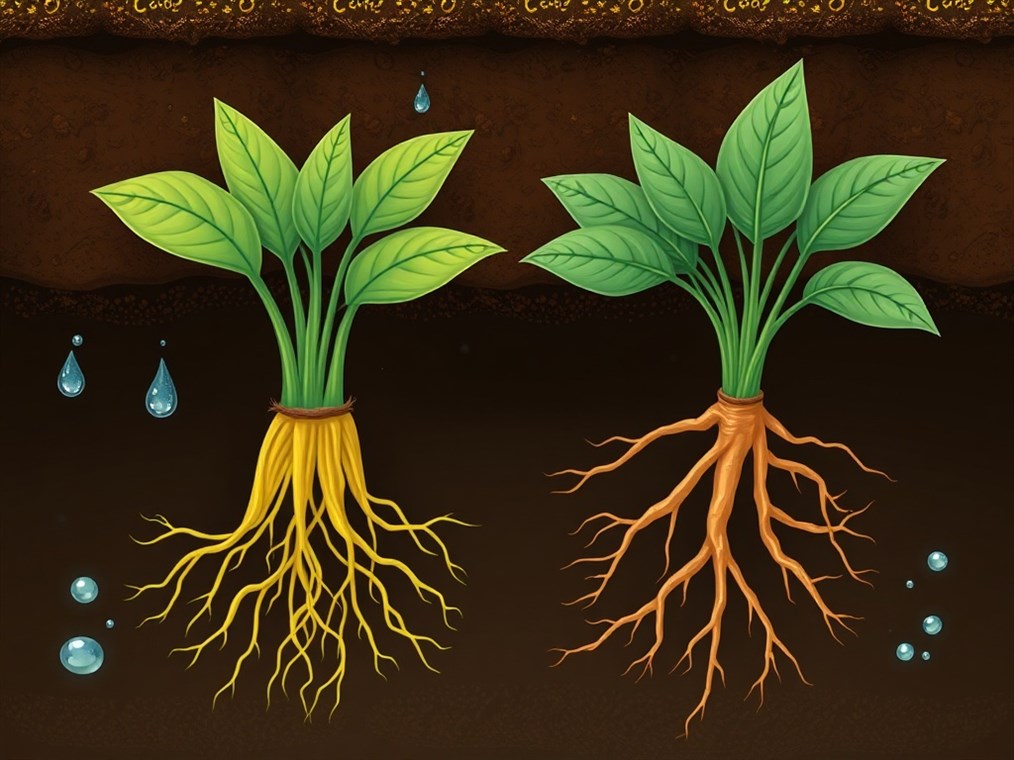Getting Down to Roots: What Makes Monocot and Dicot Roots So Different?
Roots. They’re not exactly the rock stars of the plant world, are they? Tucked away underground, out of sight, out of mind. But hold on a second! These unsung heroes are absolutely vital, anchoring plants, slurping up water and nutrients, and even storing запасы for a rainy day. And when it comes to flowering plants – those showy angiosperms we all love – there are two main teams: monocots and dicots. While both rely on roots to survive and thrive, what’s going on inside those roots is a whole different ballgame. So, let’s dig in and see what makes them tick!
First things first, let’s zoom out and look at the big picture. Monocots? Think grasses, lilies, and corn. They sport what’s called a fibrous root system. Imagine a tangled web of тонкие roots, all roughly the same size, spreading out like crazy from the stem. They’re like the ultimate ground-hugging crew. Dicots, on the other hand (think beans, roses, and oak trees), usually boast a taproot system. This is your classic, single, thick main root plunging straight down, with smaller side roots branching off like tributaries from a river. It’s the anchor that means business.
Okay, now for the nitty-gritty. Both monocot and dicot roots are built from the same basic building blocks – layers of tissues like the epidermis, cortex, endodermis, and a central vascular cylinder (the stele). Think of it like a layer cake, but with each layer having its own special job. But here’s where things get interesting: the details of these layers, and how they’re arranged, are where the real differences pop up.
Let’s start with the outermost layer, the epidermis. It’s the root’s skin, its first point of contact with the soil. Both monocots and dicots have one, made of tightly packed cells. These cells are thirsty! Many sprout tiny root hairs, like microscopic fingers, reaching out to grab every last drop of water and nutrient.
Next up, the cortex. This is the layer beneath the epidermis, made of ground tissue. In monocots, the cortex tends to be wide open, with lots of space between the cells. Think of it as a sponge, soaking up everything it can. Older monocot roots might even develop a tough outer layer, the exodermis, for extra protection. Dicots? Their cortex is usually a bit more compact. Plus, dicot roots might have some tougher sclerenchyma cells mixed in for added support, whereas monocots stick to just parenchyma.
Now, the endodermis. This is a fascinating layer! It’s the innermost part of the cortex, acting like a security checkpoint. The cells have these special bands called Casparian strips – imagine tiny waterproof belts – that force water and nutrients to go through the cell membranes, not around them. This gives the plant serious control over what it absorbs. Monocots tend to have a thicker endodermis, and special “passage cells.” Dicots have more prominent Casparian strips.
Moving inwards, we hit the pericycle. This layer is where the magic happens – it’s where lateral roots are born! In monocots, the pericycle is only responsible for making these side roots. Dicots? Their pericycle does double duty, also helping to form a layer called the cork cambium.
Finally, we arrive at the vascular cylinder, the stele. This is the root’s central plumbing system, containing the xylem (for water transport) and phloem (for sugar transport). Here’s where things get really distinct. In monocots, the vascular bundles are arranged in a ring around a central pith, like a sprinkler system. And they have lots of them – more than six! Dicot roots have their vascular structures in the middle of the root. The xylem is located in the center of the dicot root, and bundles of phloem are arranged around it, separated from it by vascular cambium. The number of vascular bundles is usually between two and six.
Oh, and that pith we just mentioned? It’s a region of ground tissue right in the center. Monocots have a well-developed pith, acting like a storage room. Dicots? Not so much. Their pith is either tiny, or just plain absent.
One last, crucial difference: secondary growth. Dicots have the potential for secondary growth, meaning their roots can get thicker over time, like a tree trunk. Monocots? Nope. What you see is what you get.
So, there you have it! Monocot and dicot roots: both essential, but built with distinct blueprints. These differences aren’t just random quirks; they’re reflections of each plant’s lifestyle, its adaptations to its environment, and its evolutionary history. The next time you’re pulling weeds, take a closer look at the roots. You might just be surprised by what you discover!

